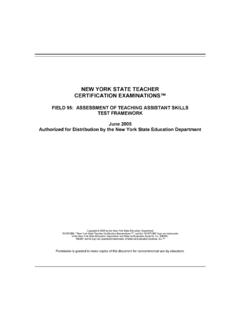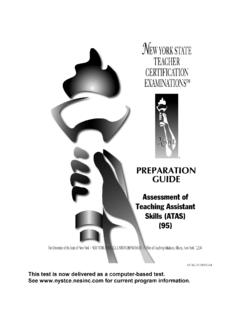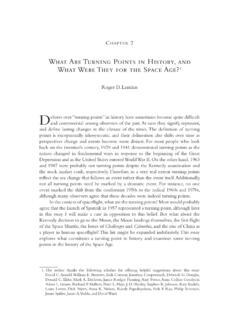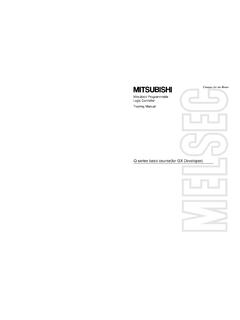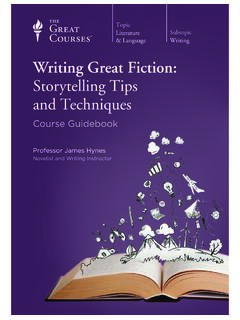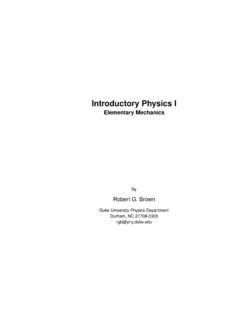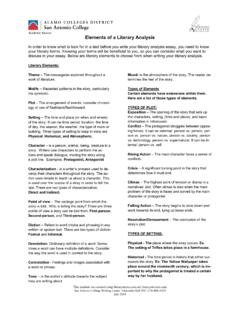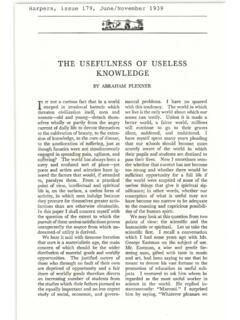Transcription of This test is now delivered as a computer-based test. See ...
1 NY-SG-FLD090-02. This test is now delivered as a computer-based test. See for current program information. Copyright 2006 by National Evaluation Systems, Inc. (NES ). "NYSTCE ," "New York State Teacher Certification Examinations ," and the "NYSTCE " logo are trademarks of the New York State Education Department and National Evaluation Systems, Inc. (NES ). "NES " and its logo are registered trademarks of National Evaluation Systems, Inc.. PREPARATION GUIDE. Elementary Assessment of Teaching Skills-----Written (ATS---W) (90). Table of Contents 1 .. Introduction 2 .. General Information about the NYSTCE. 4 ..Test-Taking Strategies 6 .. About the Elementary Assessment of Teaching Skills-----Written (ATS---W). 7 .. Elementary ATS---W Objectives 20 .. Multiple-Choice Section 21 ..Sample Test Directions for Multiple-Choice Questions 22 .. Sample Multiple-Choice Questions, Correct Responses, and Explanations 55 .. Written Assignment Section 56 .. Sample Test Directions for the Written Assignment 57.
2 Sample Written Assignment 58 ..Stronger Response to the Sample Written Assignment 60 .. Evaluation of the Stronger Response 62 ..Weaker Response to the Sample Written Assignment 64 .. Evaluation of the Weaker Response 66 .. Performance Characteristics and Scoring Scale The State Education Department does not discriminate on the basis of age, color, religion, creed, disability, marital status, veteran status, national origin, race, gender, genetic predisposition or carrier status, or sexual orientation in its educational programs, services, and activities. Portions of this publication can be made available in a variety of formats, including braille, large print, or audiotape, upon request. Inquiries concerning this policy of nondiscrimination should be directed to the Department's Office for Diversity, Ethics, and Access, Room 530, Education Building, Albany, NY 12234. INTRODUCTION. Purpose of This Preparation Guide This preparation guide is designed to help familiarize candidates with the content and format of a test for the New York State Teacher Certification Examinations (NYSTCE ).
3 Program. Education faculty and administrators at teacher preparation institutions may also find the information in this guide useful as they discuss the test with candidates. The knowledge and skills assessed by the test are acquired throughout the academic career of a candidate. A primary means of preparing for the test is the collegiate preparation of the candidate. This preparation guide illustrates some of the types of questions that appear on a test;. however, the set of sample questions provided in this preparation guide does not necessarily define the content or difficulty of an entire actual test. All test components ( , directions, question content and formats) may differ from those presented here. The NYSTCE program is subject to change at the sole discretion of the New York State Education Department. Organization of This Preparation Guide Contained in the beginning sections of this preparation guide are general information about the NYSTCE program and how the tests were developed, a description of the organization of test content, and strategies for taking the test.
4 Following these general information sections, specific information about the test described in this guide is presented. The test objectives appear on the pages following the test- specific overview. The objectives define the content of the test. Next, information about the multiple-choice section of the test is presented, including sample test directions. Sample multiple-choice questions are also presented, with the correct responses indicated and explanations of why the responses are correct. Following the sample multiple-choice questions, a description of the written assignment section of the test is provided, including sample directions. A sample written assignment is presented next, followed by an example of a stronger response to the assignment and an evaluation of that response. Finally, an example of a weaker response to the assignment is presented, followed by an evaluation of that response. For Further Information If you have questions after reading this preparation guide, you may wish to consult the NYSTCE Registration Bulletin.
5 You can view or print the registration bulletin online at n1n GENERAL INFORMATION ABOUT THE NYSTCE. How Were the NYSTCE Tests Developed? The New York State Teacher Certification Examinations are criterion referenced and objective based. A criterion-referenced test is designed to measure a candidate's knowledge and skills in relation to an established standard rather than in relation to the performance of other candidates. The explicit purpose of these tests is to help identify for certification those candidates who have demonstrated the appropriate level of knowledge and skills that are important for performing the responsibilities of a teacher in New York State public schools. Each test is designed to measure areas of knowledge called subareas. Within each subarea, statements of important knowledge and skills, called objectives, define the content of the test. The test objectives were developed for the New York State Teacher Certification Examinations in conjunction with committees of New York State educators.
6 Test questions matched to the objectives were developed using, in part, textbooks; New York State learning standards and curriculum guides; teacher education curricula; and certification standards. The test questions were developed in consultation with committees of New York State teachers, teacher educators, and other content and assessment specialists. An individual's performance on a test is evaluated against an established standard. The passing score for each test is established by the New York State Commissioner of Education based on the professional judgments and recommendations of New York State teachers. Examinees who do not pass a test may retake it at any of the subsequently scheduled test administrations. n2n Organization of Content The content covered by each test is organized into subareas. These subareas define the major content domains of the test. Subareas typically consist of several objectives. Objectives provide specific information about the knowledge and skills that are assessed by the test.
7 Each objective is elaborated on by focus statements. The focus statements provide examples of the range, type, and level of content that may appear on the tests. Test questions are designed to measure specific test objectives. The number of objectives within a given subarea generally determines the number of questions that will address the content of that subarea on the test. In other words, the subareas that consist of more objectives will receive more emphasis on the test and contribute more to a candidate's test score than the subareas that consist of fewer objectives. The following example, taken from the field of Social Studies, illustrates the relationship of test questions to subareas, objectives, and focus statements. SOCIAL STUDIES (05). SUBAREA I HISTORY. 0003 Understand the major political, social, economic, scientific, and cultural developments and turning points that shaped the course of world history from 1500. through 1850. analyzing the roles, contributions, and diverse perspectives of individuals and groups involved in independence struggles in Latin America Which of the following was an important goal of nineteenth-century Latin American liberals?
8 A. establishing governments based on the separation of church and state B. reducing the influence of competitive individualism in social and economic life C. creating strong centralized governments D. making plantation agriculture the foundation of economic development Each multiple-choice question is designed to measure one of the test objectives. The focus statements provide examples of the range, type, and level of content that may appear on the test for questions measuring the objective. The objectives define the knowledge and skills that New York State teachers and teacher educators have determined to be important for teachers to possess. The field is divided into major content subareas. The number of objectives in each subarea may vary, depending on the breadth of content contained within it. This is the name and field number of the test. n3n TEST-TAKING STRATEGIES. Be On Time. Arrive at the test center on time so that you are rested and ready to begin the test when instructed to do so.
9 Follow Directions. At the beginning of the test session and throughout the test, follow all directions carefully. This includes the oral directions that will be read by the test administrators and any written directions in the test booklet. The test booklet will contain general directions for the test as a whole and specific directions for individual test questions or groups of test questions. If you do not understand something about the directions, do not hesitate to raise your hand and ask your test administrator. Pace Yourself. The test schedule is designed to allow sufficient time for completion of the test. Each test session is four hours in length. The tests are designed to allow you to allocate your time within the session as you need. You can spend as much time on any section of the test as you need, and you can complete the sections of the test in any order you desire; however, you will be required to return your materials at the end of the four-hour session.
10 Since the allocation of your time during the test session is largely yours to determine, planning your own pace for taking the test is very important. Do not spend a lot of time with a test question that you cannot answer promptly; skip that question and move on. If you skip a question, be sure to skip the corresponding row of answer choices on your answer sheet. Mark the question in your test booklet so that you can return to it later, but be careful to appropriately record on the answer sheet the answers to the remaining questions. You may find that you need less time than the four hours allotted in a test session, but you should be prepared to stay for the entire time period. Do not make any other commitments for this time period that may cause you to rush through the test. Read Carefully. Read the directions and the questions carefully. Read all response options. Remember that multiple-choice test questions call for the "best answer"; do not choose the first answer that seems reasonable.
